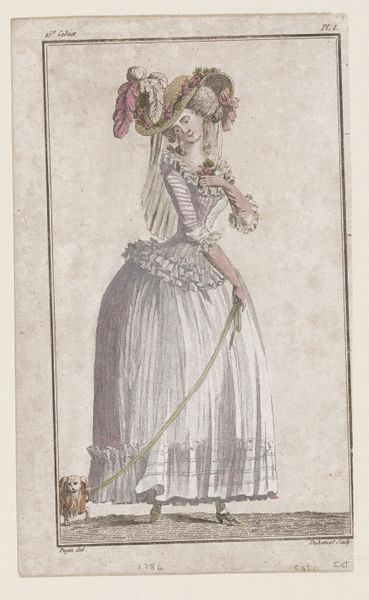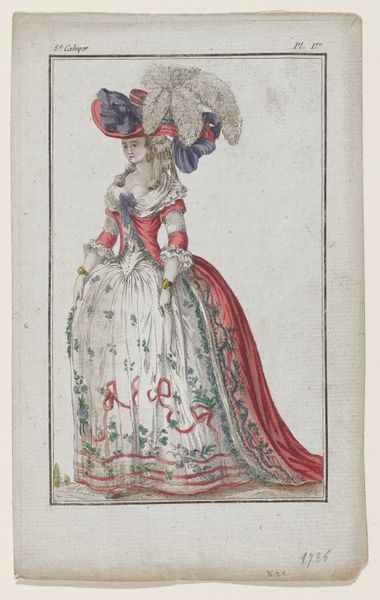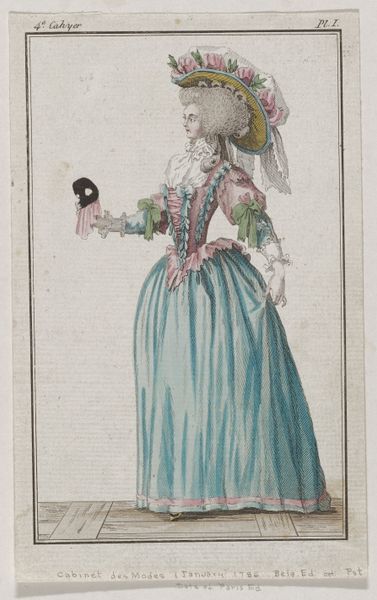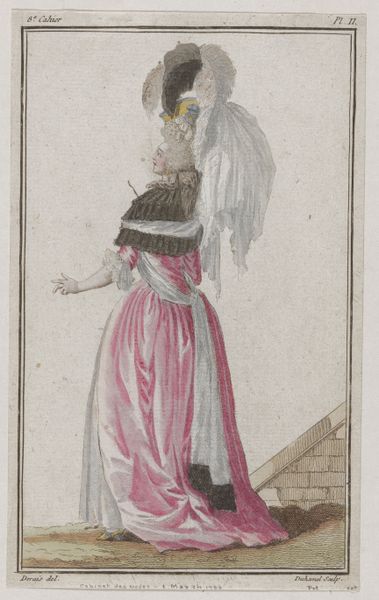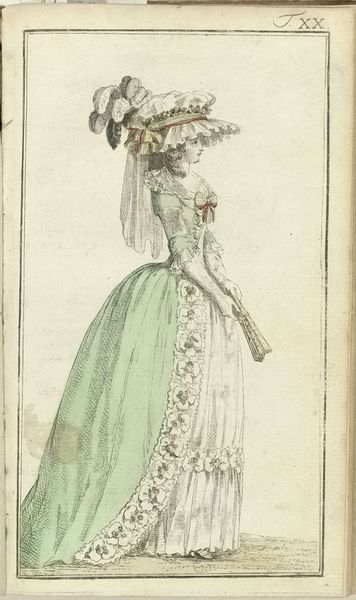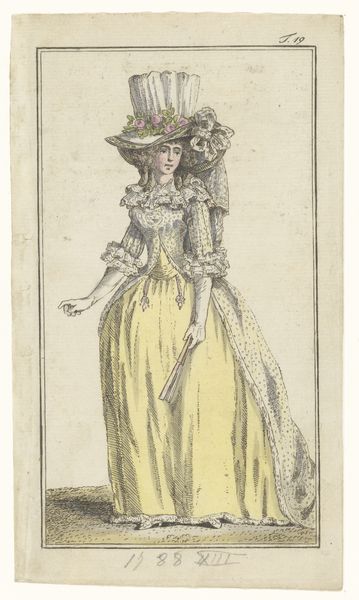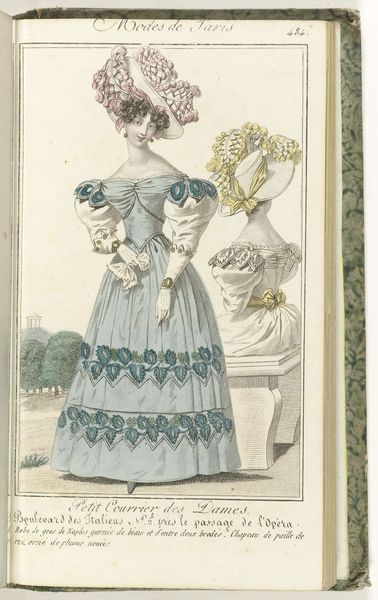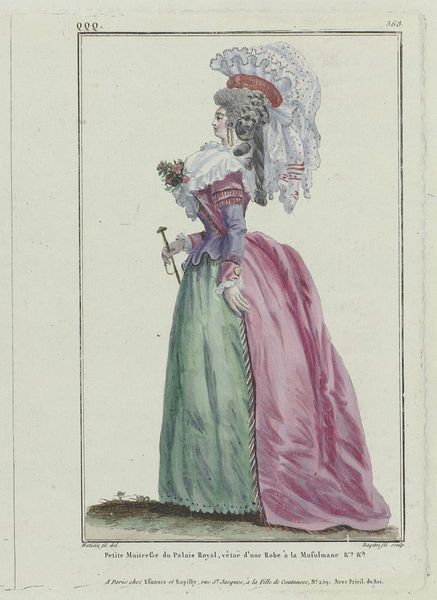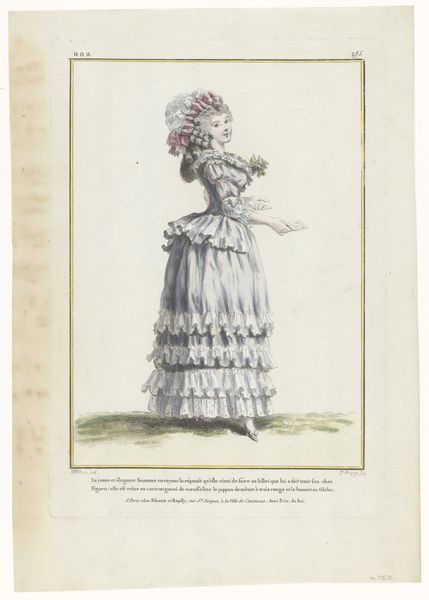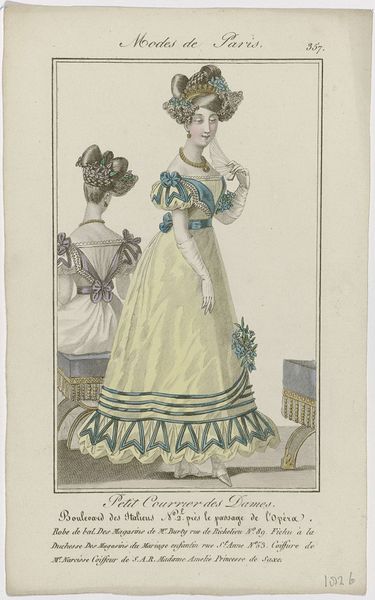
Dimensions: 7 5/8 × 4 5/8 in. (19.37 × 11.75 cm) (sheet)
Copyright: Public Domain
Curator: Well, isn't this charming? This is Plate I from the Cabinet des Modes, dating back to 1786. It is currently held at the Minneapolis Institute of Art and is attributed to A.B. Duhamel. I find it incredibly evocative. Editor: My first impression? Elegance...with a slight air of apprehension. She looks like she is caught in thought, about to say something. The colors are surprisingly soft, and the overall composition is pleasing. Though her dress… well, it is not really 'her,' is it? Curator: Indeed! It represents a particular moment in fashion history. The late 18th century was a time of enormous social and sartorial upheaval. This image encapsulates the Rococo aesthetic and, in its own way, serves as a document of evolving cultural ideals. This is evident in the woman's adornment with particular attention to the enormous hat she adorns which displays a number of artificial elements Editor: I'm struck by the way the artist renders the textures. You can almost feel the silk of the dress and the delicacy of the lace. It’s interesting, because it could also be an aspirational dreamscape – the woman, even, is obscured from plain view, as though hidden in plain sight behind an aspirational vision of who and how a woman should be. There's an attention to the dress – I keep thinking this image prioritizes the aesthetic beauty in how and why certain visual cues took hold. Curator: Precisely. Think about the social function of fashion. This plate, distributed widely as a print, wasn't just showing what was "in," it was shaping desires, defining status, and constructing a visual language of class. Her style represents more than a fleeting trend: it signals the perpetuation of wealth, luxury and artistic innovation during a period where tradition, hierarchy and social decorum was a vital component of life and survival for many. The dress may not be 'her,' as you say, but represents who she should aspire to be for many contemporary female consumers and connoisseurs. Editor: It really emphasizes the power of images to dictate and drive societal narratives. These pieces still make us contemplate where visual style trends take root from – what we carry, who we try to become, and whether any of those details ultimately define us for better or worse. Curator: Ultimately, perhaps, these ephemeral objects can indeed lead us to something more enduring, helping us better appreciate who we were then and what vestiges remain for those we wish to become now.
Comments
No comments
Be the first to comment and join the conversation on the ultimate creative platform.
